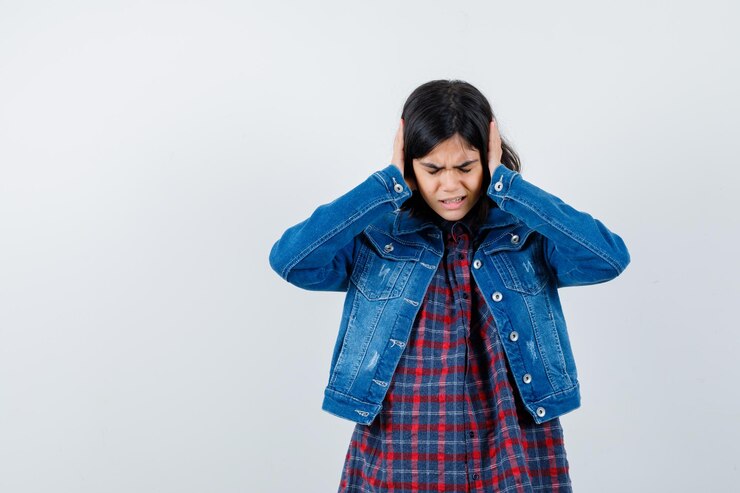Panic disorder in children is not substantially different from panic disorder that an adult may suffer from. Perhaps the most differentiating element is the different interpretations of the symptoms that each person may have. But first of all, let’s see what panic disorder is.
Panic disorder is an anxiety disorder. Anxiety is a very human emotion. It consists of an activation of the autonomic nervous system in response to stimuli or situations that are considered threatening. It, therefore, has an adaptive character, since it helps survival by activating the body’s resources.
Anxiety becomes problematic when it reaches too high an intensity or appears in situations where there is no real cause for alarm. In this case, it loses its adaptive value, causing discomfort and abnormal functioning of the person.
Anxiety in children
Children and adolescents, just like adults, can experience an anxiety disorder. Certain events, such as starting school, the birth of a sibling, the loss of a family member, or moving house, can trigger the onset of the problem.
Despite sharing many similarities with adult anxiety, a child’s reaction to the symptoms differs significantly. The negative consequences of childhood anxiety may be more severe than in adult life, as a child’s resources for managing anxiety have not yet been developed.
This is because certain events, which can have a very strong emotional impact, can interfere with the child’s growth and maturation process. In addition, the repercussions can manifest themselves in the child’s social, school, personal, and family environment, and can develop into more severe pathologies.
Some anxiety disorders are more common in childhood than others, such as generalized anxiety disorder. Others are problems specific to a particular age or to very specific events, such as when the child is separated from parents or other attachment figures.
Panic disorder in children
Panic disorder is characterized by recurrent panic attacks lasting minutes to hours. These consist of aversive, somatic (physiological), and cognitive symptoms that reach their greatest intensity within the first ten minutes. They then gradually decrease.
The most characteristic symptoms of a panic attack are the following:
- Palpitations, heart pounding, or increased heart rate.
- Sweating.
- Tremors.
- The feeling of suffocation or shortness of breath.
- Choking sensation.
- Chest tightness or discomfort.
- Nausea or abdominal discomfort.
- Unsteadiness, dizziness, or fainting.
- The feeling of unreality or depersonalization.
- Fear of losing control or going crazy.
- Fear of dying.
- Paresthesias.
- Chills or hot flashes.
In the pediatric population, the most frequent symptoms are palpitations, tremors, breathing difficulties, and dizziness (Last and Strauss, 1989). As we can see, cognitive symptoms (fear of dying or losing control) are less common in children. On the contrary, somatic or physiological symptoms predominate.
Childhood panic disorder is more common in girls than in boys. Its prevalence is low at early ages. A general prevalence in adolescents of 1% is observed (Lewinsohn, Hops, Roberts, Secley, and Andrews, 1993). It usually begins in late adolescence or mid-thirties.
Panic disorder in children can sometimes occur with agoraphobia. Agoraphobia is defined as an intense fear of being in situations from which it is difficult to escape or call for help if a symptom occurs.
What is the explanatory model of panic disorder in children?
Ley (1987) considers that anxiety and stress are the two most common triggers of hyperventilation, regardless of whether it may have other precipitants (medical conditions, physical exercise, caffeine intake, etc.).
Hyperventilation involves the child breathing over his or her metabolic requirements. Ventilation is too high relative to the rate of carbon dioxide production. This results in a reduction in arterial carbon dioxide pressure below the normal range.
The sensations that accompany hyperventilation (sweating, tachycardia, palpitations, dizziness, visual disturbances, feeling of suffocation, difficulty breathing, cramps, etc.) provoke fear in the child. This triggers the fight-or-flight mechanism, increasing the symptoms of hyperventilation and fear of the sensations.
The increase in symptoms and the resulting fear create a vicious circle that can culminate in the onset of a panic attack. However, hyperventilation is not the only factor that explains panic attacks. Other factors include biological predisposition and Pavlovian conditioning, which explains panic attacks through association processes.
As we have seen, panic disorder in children is very similar to that suffered by adults. Perhaps the most significant difference is the interpretation that children and adults make of the symptoms, as well as the greater or lesser presence of physical or cognitive symptoms.

